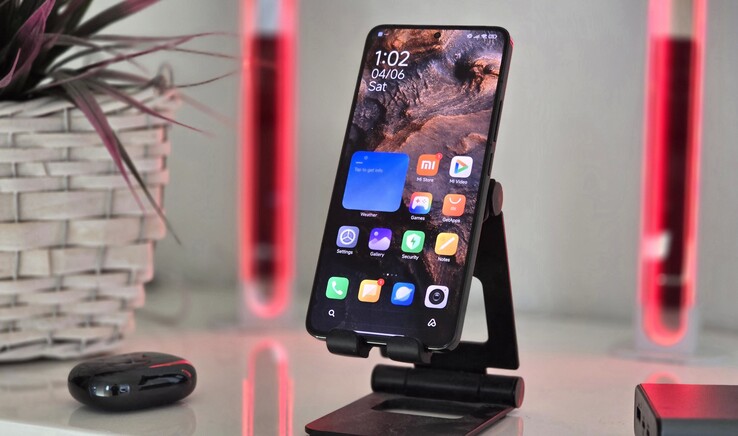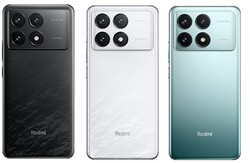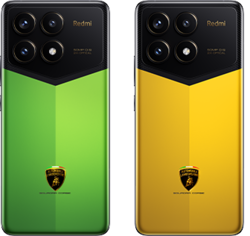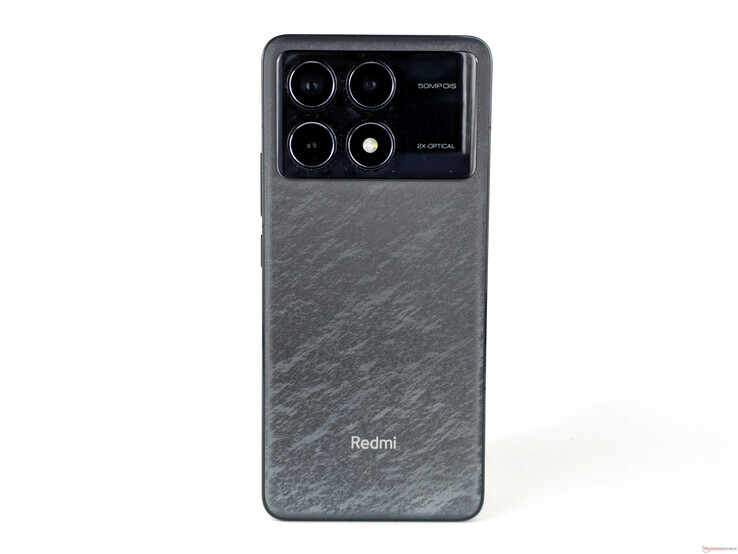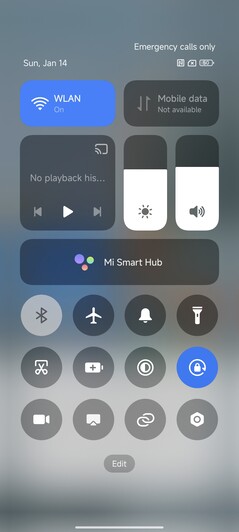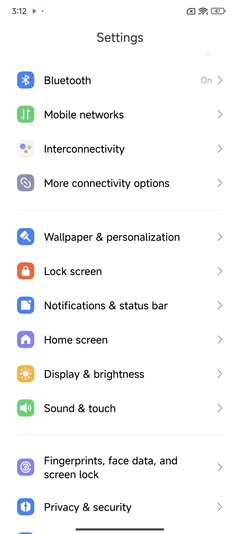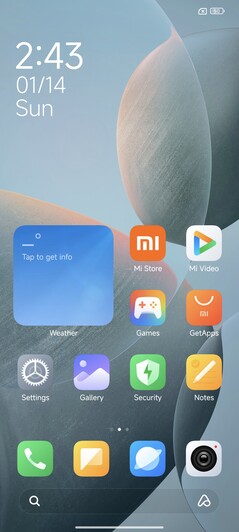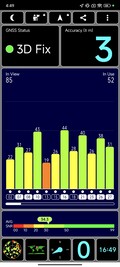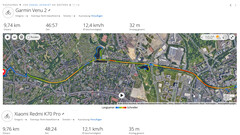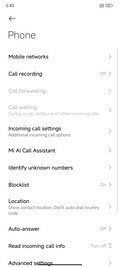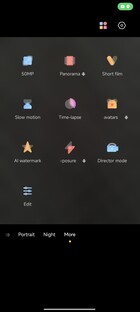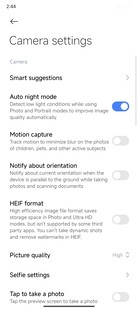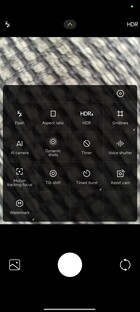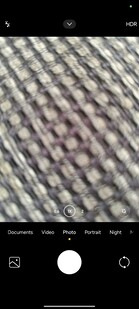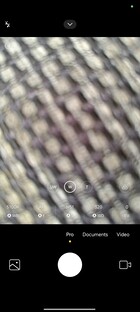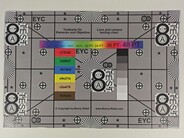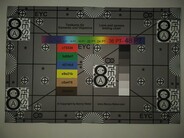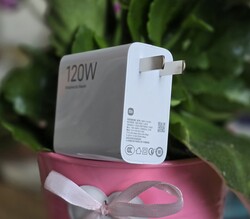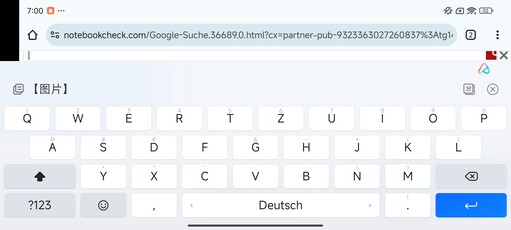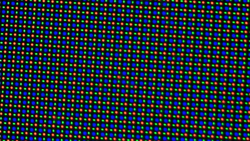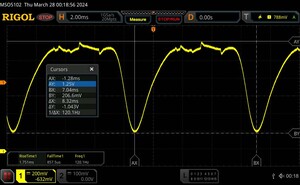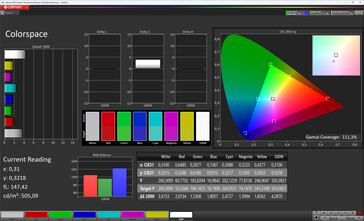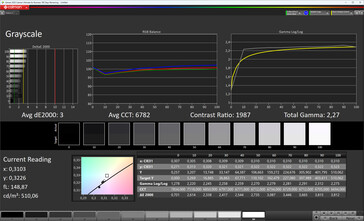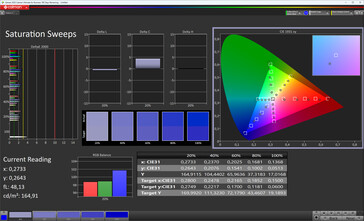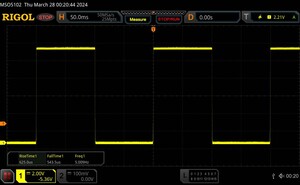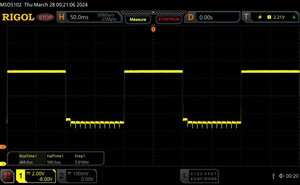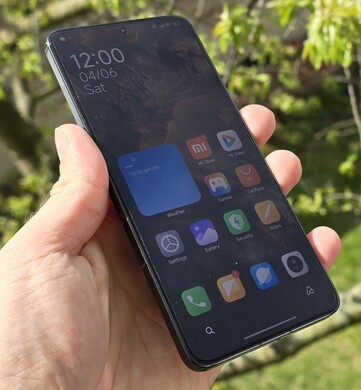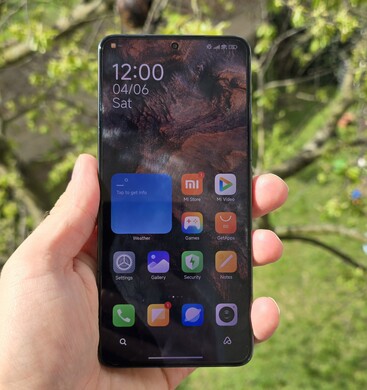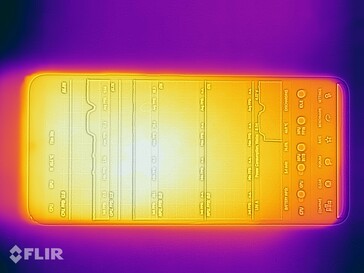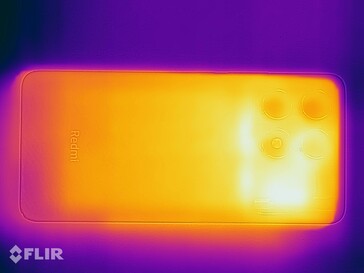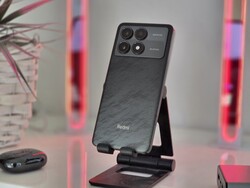Xiaomi Redmi K70 Pro smartphone review: Spectacular hardware for a mid-range price
If any smartphone deserves the title of "flagship killer", it's definitely the Redmi K70 Pro. With up to 24 GB of RAM, the best chipset currently available in an Android smartphone and over 4000 nits, the Xiaomi smartphone sets standards for the year 2024 in the mid-range, at least on the data sheet.
However, the Redmi K70 Pro is only available as an import for now, including from Trading Shenzhen with 12 GB RAM and 256 GB flash storage for a price of around $485. The top model with 24 GB RAM and 1 TB flash storage costs around $730. If the rumors are true, the Xiaomi smartphone will also get a global launch, albeit with different branding, namely as the Poco F6 Pro.
In order to achieve these aggressively low prices, Xiaomi has installed solid, but not high-end hardware in the cameras. However, buyers will still benefit from optical image stabilization and an 8K video option for the 50 MP main camera.
Possible competitors compared
Rating | Date | Model | Weight | Drive | Size | Resolution | Price |
|---|---|---|---|---|---|---|---|
| 87.2 % v7 (old) | 04 / 2024 | Xiaomi Redmi K70 Pro SD 8 Gen 3, Adreno 750 | 209 g | 256 GB UFS 4.0 Flash | 6.67" | 3200x1440 | |
| 84.9 % v7 (old) | 01 / 2024 | Realme GT5 SD 8 Gen 2, Adreno 740 | 205 g | 512 GB UFS 4.0 Flash | 6.74" | 2772x1240 | |
| 86.1 % v7 (old) | 03 / 2024 | Xiaomi Poco X6 Pro 5G Dimensity 8300-Ultra, Mali-G615 MP6 | 186 g | 512 GB UFS 4.0 Flash | 6.67" | 2712x1220 | |
| 87.4 % v7 (old) | 05 / 2024 | Samsung Galaxy A55 5G Exynos 1480, Xclipse 530 | 213 g | 256 GB UFS 3.1 Flash | 6.60" | 2340x1080 | |
| 87.4 % v7 (old) | 03 / 2024 | Xiaomi Redmi Note 13 Pro+ 5G Dimensity 7200, Mali-G610 MP4 | 204.5 g | 512 GB UFS 3.1 Flash | 6.67" | 2712x1220 | |
| 86.8 % v7 (old) | 02 / 2024 | Nubia RedMagic 9 Pro SD 8 Gen 3, Adreno 750 | 229 g | 512 GB UFS 4.0 Flash | 6.80" | 2480x1116 |
Casing - IP rating absent
The Redmi K70 comes in two designs. While the standard design appears rather plain and inconspicuous, the two Lamborghini editions are very distinctive. In total, there are five colors to choose from. IP certification has been omitted to minimize costs, but the SIM card slot has a red-coloured sealing ring.
The edges around the 6.67-inch AMOLED panel are not symmetrical, but they are thin, which results in a better display-to-surface ratio of 89%. Since Xiaomi has decided against a protective glass from Corning for the 14 Pro and opted for an in-house material solution, we assume that no Gorilla Glass is used for the K70 Pro either and there is no official information on this.
The build quality and feel are very good for a mid-range smartphone and the built-in keys sit comfortably firmly in the aluminum frame. The gaps are also flush and give no cause for criticism. The only drawback is the plastic back, which doesn't attract greasy finger marks thanks to its matte finish and doesn't feel all that cheap.
Equipment - IR blaster on board
With Bluetooth 5.4, dual SIM, stereo speakers, an IR blaster and NFC for contactless payment, the Redmi K70 Pro offers very well-rounded features for the mid-range. As expected, the USB-C port is only of the 2.0 standard, which means that wired image output is not possible here. In our copy test with a M2.SSD hard disk (Samsung 980 Pro), the transfer speed of the USB port is a low 30 MB/s. The connected storage media can be formatted with FAT, FAT32 or exFAT. Xiaomi also supports reading and writing for NTFS drives.
Our test device has 256 GB of UFS 4.0 storage, but the actual available storage space is less (around 227 GB) due to the operating system and some pre-installed apps. If you need more space, you can transfer files to an external storage medium, such as memory sticks, via USB-OTG. Storage expansion with a microSD card is not possible.
The K70 Pro does not support wired image output, but the wireless transmission of display content to external monitors via Miracast is possible. Video content from streaming services can be viewed in HD quality thanks to Widevine L1.
Software - HyperOS
The Redmi K70 Pro utilizes the Xiaomi HyperOS kernel, a fusion of Linux and the self-developed Vela system. At the time of review, the HyperOS interface was based on the latest Android 14, including security patches from February 2024. Xiaomi plans to provide the K70 Pro with security-relevant updates for five years, but it is not certain how often these will be rolled out each year. The same applies to the number of planned Android upgrades. However, the update supply for Redmi models has not been reliable in the past (increasingly longer intervals as they get older).
The K70 Pro does not support Google apps or a comprehensive language selection ex works. Here, users have to install the apk files themselves, such as the Playstore, and make do with English as the interface language. There are also limitations with Android Auto.
Communication and GNSS - 5G included
Thanks to WiFi 7, the Redmi K70 Pro delivers blazing speeds, provided the corresponding counterpart is just as fast. Connected to our Asus ROG Rapture GT-AXE11000 reference router, very high transfer rates in the 6 GHz range of over 1800 MBit/s are also possible, at least when sending. However, the high data rates are quite inconsistent and fluctuate greatly.
In addition to the high-performing WiFi, the K70 Pro utilizes the fast 5G standard and a solid frequency range on the 4G network. However, band 20 and 32 are missing from the 17 LTE bands often used in countries worldwide.
| Networking | |
| Xiaomi Redmi K70 Pro | |
| iperf3 receive AXE11000 | |
| iperf3 transmit AXE11000 | |
| iperf3 transmit AXE11000 6GHz | |
| iperf3 receive AXE11000 6GHz | |
| Realme GT5 | |
| iperf3 receive AXE11000 | |
| iperf3 transmit AXE11000 | |
| Xiaomi Poco X6 Pro 5G | |
| iperf3 receive AXE11000 | |
| iperf3 transmit AXE11000 | |
| Samsung Galaxy A55 5G | |
| iperf3 receive AXE11000 | |
| iperf3 transmit AXE11000 | |
| Xiaomi Redmi Note 13 Pro+ 5G | |
| iperf3 receive AXE11000 | |
| iperf3 transmit AXE11000 | |
| Nubia RedMagic 9 Pro | |
| iperf3 receive AXE11000 | |
| iperf3 transmit AXE11000 | |
| iperf3 transmit AXE11000 6GHz | |
| iperf3 receive AXE11000 6GHz | |
| Average of class Smartphone | |
| iperf3 receive AXE11000 | |
| iperf3 transmit AXE11000 | |
| iperf3 transmit AXE11000 6GHz | |
| iperf3 receive AXE11000 6GHz | |
The Redmi K70 Pro uses the main satellite systems to establish its position: GPS, Galileo, GLONASS and Beidou, usually in dual band. The positioning accuracy of the mid-range smartphone, which we put to the test on a short bike ride, is very good.
We recorded a route in parallel with the Garmin Venu 2 for comparison purposes. Deviations between the measurements of both devices are generally minor, but we like the detailed tracking on the Redmi K70 Pro even better than on the Garmin smartwatch. But the recorded routes are often congruent. The Redmi smartphone is thus more than suitable for everyday navigational tasks.
Telephony and voice quality
The Redmi K70 Pro offers a fully-fledged dual SIM with two nano-SIM card slots, but there is no option of integrating an eSIM into the system. Calls can also be made via WLAN.
The K70 Pro's two built-in microphones provide good voice quality, although this is somewhat impaired by minor background noise. The noise suppression works at a satisfactory level. The same applies to the voice quality via the earphones.
Cameras - OIS part of the package
The mid-range smartphone's selfie camera takes photos with a resolution of 16 MP and uses fixed focus to focus on the subject. In bright surroundings, the quality is absolutely satisfactory, but the lack of a 4K video option means that the Redmi K70 Pro is not a vlogging expert.
The 50 MP main camera is more suitable for recording moving images thanks to the supported 8K recording or 4K60 option, but the stabilization is not at flagship level despite OIS.
In terms of photo quality, the Light Hunter 800 image sensor, a 1/1.55-inch sensor from Omnivision, delivers thoroughly appealing results. The dynamic range is convincing and the shots have with plenty of light thanks to the large aperture (f/1.6). However, photos taken with the Redmi K70 Pro often appear somewhat overexposed. The sharpness level could also be a little higher.
The mid-range phone also offers a lossless zoom. The 50 MP lens has 2x optical magnification and the results are quite impressive. However, if you want to get closer to the subject, you'll quickly lose quality so that there is hardly any detail at 5x zoom.
The main and telephoto optics are complemented by a 12 MP ultra-wide-angle camera. The sharpness of the images is okay for this price range, but background noise is already visible in daylight. However, the third lens in the Redmi K70 Pro's camera array always delivers satisfactory results for social media.
Image comparison
Choose a scene and navigate within the first image. One click changes the position on touchscreens. One click on the zoomed-in image opens the original in a new window. The first image shows the scaled photograph of the test device.
Wide angleWide angleLow lightUltra wide angle5x zoomUnder controlled lighting conditions, we analyzed the color representation of the Light Hunter 800 in comparison to the actual reference colors. Apart from the typical brightening that often occurs in smartphones, the Redmi K70 Pro does not reveal any major deviations in the ColorChecker passport. The smartphone only exhibits color outliers (>10) in cyan.


Accessories and warranty
The black delivery box contains a protective cover, a 120-watt charger (USB-A to USB-C), a tool for replacing the SIM card and information leaflets in Chinese. A protective film is also applied ex works. Moreover, Trading Shenzhen supplied an additional EU adapter for the charger and a USB OTG adapter to the scope of delivery for our Chinese model.
The Redmi K70 Pro comes with a 12-month warranty.
Input devices & operation
The capacitive touchscreen responds very precisely to finger input. With a sampling rate of up to 2160 Hz, the OLED panel is highly sensitive to touches, but the screen only refreshes 2160 times per second in certain application scenarios, such as in games, in order to ensure very low latency for inputs.
Xiaomi installs a solid x-axis vibration motor in the Redmi K70 Pro, which provides pleasant haptic feedback in everyday use. The optical fingerprint sensor is integrated into the OLED display and unlocks reliably and quickly. There is also the 2D facial recognition, which functions via the front camera.
Display - Decent AMOLED panel
The built-in 6.67-inch AMOLED display from TCL reaches a WQHD+ resolution and a very high pixel density of 522 ppi. The system outputs a minimum frequency of 60 Hz for the 120 Hz screen in automatic mode. Alternatively, the refresh rate can also be fixed at 60 or 120 Hz.
The maximum brightness with a pure white display and activated ambient light sensor is 1026 cd/m²; the display appears brighter when the light and dark areas are evenly distributed (APL18). Here, however, the Redmi K70 Pro falls slightly short of our expectations with 1236 cd/m². Fortunately, we still achieved the advertised peak brightness of 4000 nits, namely 4061 cd/m², when playing back 4K video material. This makes the Redmi K70 Pro ideally suited to the playback of HDR content. HLG, HDR10+ and HDR Vivid as well as Dolby Vision are supported.
| |||||||||||||||||||||||||
Brightness Distribution: 99 %
Center on Battery: 1026 cd/m²
Contrast: ∞:1 (Black: 0 cd/m²)
ΔE ColorChecker Calman: 2.5 | ∀{0.5-29.43 Ø4.79}
ΔE Greyscale Calman: 3 | ∀{0.09-98 Ø5}
100% sRGB (Calman 2D)
Gamma: 2.27
CCT: 6782 K
| Xiaomi Redmi K70 Pro AMOLED, 3200x1440, 6.7" | Realme GT5 AMOLED, 2772x1240, 6.7" | Xiaomi Poco X6 Pro 5G AMOLED, 2712x1220, 6.7" | Samsung Galaxy A55 5G Super AMOLED, 2340x1080, 6.6" | Xiaomi Redmi Note 13 Pro+ 5G AMOLED, 2712x1220, 6.7" | Nubia RedMagic 9 Pro AMOLED, 2480x1116, 6.8" | |
|---|---|---|---|---|---|---|
| Screen | -37% | 27% | 18% | 32% | 26% | |
| Brightness middle (cd/m²) | 1026 | 1080 5% | 1034 1% | 962 -6% | 1240 21% | 1035 1% |
| Brightness (cd/m²) | 1021 | 1084 6% | 1035 1% | 967 -5% | 1233 21% | 1031 1% |
| Brightness Distribution (%) | 99 | 92 -7% | 96 -3% | 99 0% | 98 -1% | 96 -3% |
| Black Level * (cd/m²) | ||||||
| Colorchecker dE 2000 * | 2.5 | 5 -100% | 1.1 56% | 1.6 36% | 1.1 56% | 1 60% |
| Colorchecker dE 2000 max. * | 3.9 | 7.7 -97% | 1.9 51% | 2.6 33% | 2.2 44% | 1.9 51% |
| Greyscale dE 2000 * | 3 | 3.9 -30% | 1.4 53% | 1.5 50% | 1.4 53% | 1.6 47% |
| Gamma | 2.27 97% | 2.03 108% | 2.22 99% | 2.13 103% | 2.21 100% | 2.25 98% |
| CCT | 6782 96% | 7001 93% | 6674 97% | 6382 102% | 6669 97% | 6368 102% |
* ... smaller is better
Due to the OLED technology, Xiaomi uses PWM modulation to control screen brightness, including the typical screen flickering. In our measurement with the oscilloscope, the amplitude curve is very even across the entire brightness spectrum and constant at 120 Hz. A special feature of the Redmi K70 Pro, however, is the very high frequency of 3840 Hz, at which the panel exhibits visually perceptible fluctuations in luminance. This should make the OLED display much more suitable for users with PWM sensitivity than the basic flickering suggests.
Screen Flickering / PWM (Pulse-Width Modulation)
| Screen flickering / PWM detected | 120 Hz | ||
The display backlight flickers at 120 Hz (worst case, e.g., utilizing PWM) . The frequency of 120 Hz is very low, so the flickering may cause eyestrain and headaches after extended use. In comparison: 53 % of all tested devices do not use PWM to dim the display. If PWM was detected, an average of 8156 (minimum: 5 - maximum: 343500) Hz was measured. | |||
Series of measurements at a fixed zoom level and different brightness settings
The calibration setting options are very extensive. In addition to three color profiles, there is an "Advanced" mode to choose from. This allows both the color temperature and individual parameters, such as saturation or color space, to be adjusted, while the larger DCI-P3 color space and another very well-calibrated color mode are also available for use.
We examined the deviations in the color calibration of the AMOLED panel using the Calman analysis software. In the "Original" profile, the sRGB color space is almost completely covered. Differences in the individual colors are barely discernible. Our measured DeltaE values indicate a slight deviation in the colors and grayscale within the target range (<3).
Display Response Times
| ↔ Response Time Black to White | ||
|---|---|---|
| 1.17 ms ... rise ↗ and fall ↘ combined | ↗ 0.625 ms rise | |
| ↘ 0.5435 ms fall | ||
| The screen shows very fast response rates in our tests and should be very well suited for fast-paced gaming. In comparison, all tested devices range from 0.1 (minimum) to 240 (maximum) ms. » 5 % of all devices are better. This means that the measured response time is better than the average of all tested devices (20.3 ms). | ||
| ↔ Response Time 50% Grey to 80% Grey | ||
| 0.99 ms ... rise ↗ and fall ↘ combined | ↗ 0.488 ms rise | |
| ↘ 0.5005 ms fall | ||
| The screen shows very fast response rates in our tests and should be very well suited for fast-paced gaming. In comparison, all tested devices range from 0.165 (minimum) to 636 (maximum) ms. » 3 % of all devices are better. This means that the measured response time is better than the average of all tested devices (31.7 ms). | ||
Outdoors, the Xiaomi smartphone benefits from its high brightness levels and leaves a great impression. The panel has enough brightness reserves to cope with early summer light situations. However, reflections limit the readability of the AMOLED panel somewhat. It should be noted that the maximum luminance without a brightness sensor is only 507 cd/m².
Performance - Modern Qualcomm SoC
The Redmi K70 Pro is very much future-proof when it comes to the choice of SoC. With the Snapdragon 8 Gen 3, Xiaomi installs the best chip to date. In our benchmarks, the mid-range phone with 16 GB DDR5x RAM and fast 256 GB UFS 4.0 memory performs at a very high level.
The single-core CPU performance in Geekbench 5.5 is very strong, and the K70 Pro performs better than the Nubia RedMagic 9 Pro with its Snapdragon 8 Gen 3, especially in the multi-core benchmarks. However, the Xiaomi smartphone unexpectedly lags behind in version 6.2, but still outperforms the Realme GT5 with last year's SoC in multi-core, which was to be expected due to the high clocked Cortex A720 cores. Otherwise, there is nothing comparable to be found in the mid-range, as even the MediaTek Dimensity 8300 Ultra performs significantly worse in the tests than the Qualcomm chipset in the K70 Pro.
| UL Procyon AI Inference for Android - Overall Score NNAPI | |
| Xiaomi Poco X6 Pro 5G | |
| Xiaomi Redmi Note 13 Pro+ 5G | |
| Average of class Smartphone (3769 - 81594, n=138, last 2 years) | |
| Nubia RedMagic 9 Pro | |
| Average Qualcomm Snapdragon 8 Gen 3 (11487 - 18370, n=22) | |
| Xiaomi Redmi K70 Pro | |
| Realme GT5 | |
| Samsung Galaxy A55 5G | |
In the graphics tests, the Redmi K70 Pro delivers very good results thanks to its Adreno 750. In GFXBench in particular, it often outperforms the Nubia RedMagic 9 Pro and is able to utilize the panel's full 120 Hz in the on-screen values. However, fluctuations can be seen in the off-screen values and in the 3DMark results - probably due to a thermally induced reduction in performance.
GFXBench (DX / GLBenchmark) 2.7: T-Rex Onscreen | 1920x1080 T-Rex Offscreen
GFXBench 3.0: on screen Manhattan Onscreen OGL | 1920x1080 1080p Manhattan Offscreen
GFXBench 3.1: on screen Manhattan ES 3.1 Onscreen | 1920x1080 Manhattan ES 3.1 Offscreen
GFXBench: on screen Car Chase Onscreen | 1920x1080 Car Chase Offscreen | on screen Aztec Ruins High Tier Onscreen | 2560x1440 Aztec Ruins High Tier Offscreen | on screen Aztec Ruins Normal Tier Onscreen | 1920x1080 Aztec Ruins Normal Tier Offscreen | 3840x2160 4K Aztec Ruins High Tier Offscreen
| 3DMark / Wild Life Extreme Unlimited | |
| Nubia RedMagic 9 Pro | |
| Xiaomi Redmi K70 Pro | |
| Realme GT5 | |
| Xiaomi Poco X6 Pro 5G | |
| Xiaomi Redmi Note 13 Pro+ 5G | |
| Samsung Galaxy A55 5G | |
| 3DMark / Wild Life Extreme | |
| Nubia RedMagic 9 Pro | |
| Xiaomi Redmi K70 Pro | |
| Realme GT5 | |
| Xiaomi Poco X6 Pro 5G | |
| Xiaomi Redmi Note 13 Pro+ 5G | |
| Samsung Galaxy A55 5G | |
| 3DMark / Wild Life Unlimited Score | |
| Nubia RedMagic 9 Pro | |
| Xiaomi Redmi K70 Pro | |
| Realme GT5 | |
| Xiaomi Poco X6 Pro 5G | |
| Xiaomi Redmi Note 13 Pro+ 5G | |
| Samsung Galaxy A55 5G | |
| 3DMark / Wild Life Score | |
| Xiaomi Redmi Note 13 Pro+ 5G | |
| Samsung Galaxy A55 5G | |
| Xiaomi Poco X6 Pro 5G | |
| 3DMark / Solar Bay Score | |
| Nubia RedMagic 9 Pro | |
| Xiaomi Redmi K70 Pro | |
| Realme GT5 | |
| 3DMark / Solar Bay Unlimited Score | |
| Nubia RedMagic 9 Pro | |
| Xiaomi Redmi K70 Pro | |
| Realme GT5 | |
| 3DMark / Sling Shot Extreme (ES 3.1) Unlimited Physics | |
| Nubia RedMagic 9 Pro | |
| Xiaomi Poco X6 Pro 5G | |
| Samsung Galaxy A55 5G | |
| Xiaomi Redmi K70 Pro | |
| Xiaomi Redmi Note 13 Pro+ 5G | |
| 3DMark / Sling Shot Extreme (ES 3.1) Unlimited Graphics | |
| Nubia RedMagic 9 Pro | |
| Xiaomi Redmi K70 Pro | |
| Xiaomi Poco X6 Pro 5G | |
| Xiaomi Redmi Note 13 Pro+ 5G | |
| Samsung Galaxy A55 5G | |
| 3DMark / Sling Shot Extreme (ES 3.1) Unlimited | |
| Nubia RedMagic 9 Pro | |
| Xiaomi Redmi K70 Pro | |
| Xiaomi Poco X6 Pro 5G | |
| Samsung Galaxy A55 5G | |
| Xiaomi Redmi Note 13 Pro+ 5G | |
| GFXBench (DX / GLBenchmark) 2.7 / T-Rex Onscreen | |
| Xiaomi Redmi K70 Pro | |
| Xiaomi Poco X6 Pro 5G | |
| Xiaomi Redmi Note 13 Pro+ 5G | |
| Samsung Galaxy A55 5G | |
| Nubia RedMagic 9 Pro | |
| Realme GT5 | |
| GFXBench (DX / GLBenchmark) 2.7 / T-Rex Offscreen | |
| Xiaomi Redmi K70 Pro | |
| Nubia RedMagic 9 Pro | |
| Realme GT5 | |
| Xiaomi Poco X6 Pro 5G | |
| Xiaomi Redmi Note 13 Pro+ 5G | |
| Samsung Galaxy A55 5G | |
| GFXBench 3.0 / Manhattan Onscreen OGL | |
| Xiaomi Redmi K70 Pro | |
| Xiaomi Poco X6 Pro 5G | |
| Xiaomi Redmi Note 13 Pro+ 5G | |
| Samsung Galaxy A55 5G | |
| Nubia RedMagic 9 Pro | |
| Realme GT5 | |
| GFXBench 3.0 / 1080p Manhattan Offscreen | |
| Nubia RedMagic 9 Pro | |
| Realme GT5 | |
| Xiaomi Redmi K70 Pro | |
| Xiaomi Poco X6 Pro 5G | |
| Xiaomi Redmi Note 13 Pro+ 5G | |
| Samsung Galaxy A55 5G | |
| GFXBench 3.1 / Manhattan ES 3.1 Onscreen | |
| Xiaomi Poco X6 Pro 5G | |
| Xiaomi Redmi K70 Pro | |
| Nubia RedMagic 9 Pro | |
| Realme GT5 | |
| Samsung Galaxy A55 5G | |
| Xiaomi Redmi Note 13 Pro+ 5G | |
| GFXBench 3.1 / Manhattan ES 3.1 Offscreen | |
| Nubia RedMagic 9 Pro | |
| Xiaomi Redmi K70 Pro | |
| Realme GT5 | |
| Xiaomi Poco X6 Pro 5G | |
| Xiaomi Redmi Note 13 Pro+ 5G | |
| Samsung Galaxy A55 5G | |
| GFXBench / Car Chase Onscreen | |
| Xiaomi Poco X6 Pro 5G | |
| Xiaomi Redmi K70 Pro | |
| Realme GT5 | |
| Nubia RedMagic 9 Pro | |
| Samsung Galaxy A55 5G | |
| Xiaomi Redmi Note 13 Pro+ 5G | |
| GFXBench / Car Chase Offscreen | |
| Xiaomi Redmi K70 Pro | |
| Nubia RedMagic 9 Pro | |
| Realme GT5 | |
| Xiaomi Poco X6 Pro 5G | |
| Xiaomi Redmi Note 13 Pro+ 5G | |
| Samsung Galaxy A55 5G | |
| GFXBench / Aztec Ruins High Tier Onscreen | |
| Xiaomi Poco X6 Pro 5G | |
| Xiaomi Redmi K70 Pro | |
| Realme GT5 | |
| Nubia RedMagic 9 Pro | |
| Samsung Galaxy A55 5G | |
| Xiaomi Redmi Note 13 Pro+ 5G | |
| GFXBench / Aztec Ruins High Tier Offscreen | |
| Realme GT5 | |
| Xiaomi Redmi K70 Pro | |
| Nubia RedMagic 9 Pro | |
| Xiaomi Poco X6 Pro 5G | |
| Xiaomi Redmi Note 13 Pro+ 5G | |
| Samsung Galaxy A55 5G | |
| GFXBench / Aztec Ruins Normal Tier Onscreen | |
| Xiaomi Poco X6 Pro 5G | |
| Xiaomi Redmi K70 Pro | |
| Realme GT5 | |
| Nubia RedMagic 9 Pro | |
| Samsung Galaxy A55 5G | |
| Xiaomi Redmi Note 13 Pro+ 5G | |
| GFXBench / Aztec Ruins Normal Tier Offscreen | |
| Realme GT5 | |
| Xiaomi Redmi K70 Pro | |
| Nubia RedMagic 9 Pro | |
| Xiaomi Poco X6 Pro 5G | |
| Xiaomi Redmi Note 13 Pro+ 5G | |
| Samsung Galaxy A55 5G | |
| GFXBench / 4K Aztec Ruins High Tier Offscreen | |
| Nubia RedMagic 9 Pro | |
| Xiaomi Redmi K70 Pro | |
| Realme GT5 | |
| Xiaomi Poco X6 Pro 5G | |
| Xiaomi Redmi Note 13 Pro+ 5G | |
| Samsung Galaxy A55 5G | |
The Redmi K70 Pro is no slouch in terms of browser speed and the dominance in the benchmark results compared to the mid-range is also clear here. Websites load quickly and can be scrolled through smoothly.
| Jetstream 2 - 2.0 Total Score | |
| Nubia RedMagic 9 Pro (Edge 120) | |
| Nubia RedMagic 9 Pro (Chrome 120) | |
| Xiaomi Redmi K70 Pro (Chrome 123) | |
| Average Qualcomm Snapdragon 8 Gen 3 (64.1 - 241, n=24) | |
| Average of class Smartphone (23.8 - 387, n=156, last 2 years) | |
| Xiaomi Poco X6 Pro 5G (Chrome 122.0.6261.64) | |
| Samsung Galaxy A55 5G (Chrome 123) | |
| Xiaomi Redmi Note 13 Pro+ 5G (Chrome 122.0.6261.90) | |
| Realme GT5 | |
| Speedometer 2.0 - Result 2.0 | |
| Xiaomi Redmi K70 Pro | |
| Average of class Smartphone (15.2 - 643, n=132, last 2 years) | |
| Nubia RedMagic 9 Pro (Edge 120) | |
| Nubia RedMagic 9 Pro (Chrome 120) | |
| Average Qualcomm Snapdragon 8 Gen 3 (69.6 - 311, n=19) | |
| Xiaomi Poco X6 Pro 5G (Chrome 122.0.6261.64) | |
| Samsung Galaxy A55 5G (Chrome 123) | |
| Xiaomi Redmi Note 13 Pro+ 5G (Chrome 122.0.6261.90) | |
| WebXPRT 4 - Overall | |
| Xiaomi Redmi K70 Pro (Chrome 123) | |
| Nubia RedMagic 9 Pro (Edge 120) | |
| Average Qualcomm Snapdragon 8 Gen 3 (69 - 212, n=22) | |
| Average of class Smartphone (27 - 306, n=148, last 2 years) | |
| Xiaomi Poco X6 Pro 5G (Chrome 122.0.6261.64) | |
| Samsung Galaxy A55 5G (Chrome 123) | |
| Xiaomi Redmi Note 13 Pro+ 5G (Chrome 122.0.6261.90) | |
| Realme GT5 (Realme Browser 40) | |
| WebXPRT 3 - Overall | |
| Average Qualcomm Snapdragon 8 Gen 3 (142 - 310, n=9) | |
| Xiaomi Redmi K70 Pro (Chrome 123) | |
| Nubia RedMagic 9 Pro (Edge 120) | |
| Average of class Smartphone (38 - 380, n=41, last 2 years) | |
| Xiaomi Poco X6 Pro 5G (Chrome 122.0.6261.64) | |
| Samsung Galaxy A55 5G (Chrome 123) | |
| Xiaomi Redmi Note 13 Pro+ 5G (Chrome 122.0.6261.90) | |
| Octane V2 - Total Score | |
| Nubia RedMagic 9 Pro (Edge 120) | |
| Nubia RedMagic 9 Pro (Chrome 120) | |
| Average Qualcomm Snapdragon 8 Gen 3 (25953 - 75238, n=27) | |
| Xiaomi Redmi K70 Pro (Chrome 123) | |
| Average of class Smartphone (2228 - 121337, n=201, last 2 years) | |
| Xiaomi Poco X6 Pro 5G (Chrome 122.0.6261.64) | |
| Samsung Galaxy A55 5G (Chrome 123) | |
| Xiaomi Redmi Note 13 Pro+ 5G (Chrome 122.0.6261.90) | |
| Realme GT5 (Realme Browser 40) | |
| Mozilla Kraken 1.1 - Total | |
| Realme GT5 (Realme Browser 40) | |
| Xiaomi Redmi Note 13 Pro+ 5G (Chrome 122.0.6261.90) | |
| Average of class Smartphone (257 - 28190, n=156, last 2 years) | |
| Samsung Galaxy A55 5G (Chrome 123) | |
| Xiaomi Poco X6 Pro 5G (Chrome 122.0.6261.64) | |
| Average Qualcomm Snapdragon 8 Gen 3 (510 - 2066, n=25) | |
| Xiaomi Redmi K70 Pro (Chrome 123) | |
| Nubia RedMagic 9 Pro (Chrome 120) | |
| Nubia RedMagic 9 Pro (Edge 120) | |
* ... smaller is better
In terms of storage speed, the UFS 4.0 memory of the Redmi K70 Pro offers excellent performance. The AndroBench values are very good, especially in reading and writing. However, some minor weaknesses show up when writing small blocks of data.
| Xiaomi Redmi K70 Pro | Realme GT5 | Xiaomi Poco X6 Pro 5G | Samsung Galaxy A55 5G | Xiaomi Redmi Note 13 Pro+ 5G | Nubia RedMagic 9 Pro | Average 256 GB UFS 4.0 Flash | Average of class Smartphone | |
|---|---|---|---|---|---|---|---|---|
| AndroBench 3-5 | 18% | 8% | -51% | -40% | 29% | -4% | -29% | |
| Sequential Read 256KB (MB/s) | 4006.87 | 3475.6 -13% | 3824.7 -5% | 1688.53 -58% | 1921.64 -52% | 4164.08 4% | 3658 ? -9% | 2206 ? -45% |
| Sequential Write 256KB (MB/s) | 3345.81 | 3117.44 -7% | 3642.57 9% | 831.44 -75% | 1702.4 -49% | 3199.98 -4% | 2703 ? -19% | 1830 ? -45% |
| Random Read 4KB (MB/s) | 372.75 | 479.83 29% | 355.7 -5% | 351.47 -6% | 248.21 -33% | 442.82 19% | 379 ? 2% | 293 ? -21% |
| Random Write 4KB (MB/s) | 354.12 | 577.13 63% | 467.74 32% | 132.11 -63% | 265.29 -25% | 691.17 95% | 393 ? 11% | 338 ? -5% |
Gaming - Up to 90 fps
To assess the graphics power of the Adreno GPU outside of benchmarks in everyday use, we take a look at two games from the PlayStore using a tool from our partner, GameBench.
Although the display supports a refresh rate of 120 Hz, we "only" get 60 fps in the first-person shooter Dead Trigger 2, which should theoretically enable HFR gaming up to 144 Hz. Based on the strong on-screen values of GFXBench, this was unexpected. There is probably a lack of software optimization here.
This assumption is also confirmed by the 90 fps in PUBG Mobile at low details. The typical 60 fps is possible in the HD setting and the Redmi K70 Pro runs at a constant 40 fps at the highest detail level (UHD).
Emissions - Moderate throttling
Temperature
The Redmi K70 Pro manages to keep its surface temperatures well under control in everyday use, but we measured a rather high waste heat of over 45.2 degrees in our burnout benchmark. This resulted in moderate throttling of system performance of 20 to 30% in the Wild Life Stress Tests of 3DMark. A better cooled (gaming) smartphone, such as the Nubia RedMagic 9 Pro, throttles its Snapdragon 8 Gen 3 significantly less and operates at a higher performance level overall.
(-) The maximum temperature on the upper side is 45.4 °C / 114 F, compared to the average of 35.2 °C / 95 F, ranging from 21.9 to 247 °C for the class Smartphone.
(±) The bottom heats up to a maximum of 44.9 °C / 113 F, compared to the average of 34 °C / 93 F
(+) In idle usage, the average temperature for the upper side is 27.3 °C / 81 F, compared to the device average of 32.9 °C / 91 F.
3DMark Wild Life Stress Test
| 3DMark | |
| Wild Life Stress Test Stability | |
| Samsung Galaxy A55 5G | |
| Xiaomi Redmi Note 13 Pro+ 5G | |
| Nubia RedMagic 9 Pro | |
| Xiaomi Poco X6 Pro 5G | |
| Xiaomi Redmi K70 Pro | |
| Realme GT5 | |
| Wild Life Extreme Stress Test | |
| Xiaomi Redmi Note 13 Pro+ 5G | |
| Samsung Galaxy A55 5G | |
| Nubia RedMagic 9 Pro | |
| Xiaomi Redmi K70 Pro | |
| Xiaomi Poco X6 Pro 5G | |
| Realme GT5 | |
| Solar Bay Stress Test Stability | |
| Nubia RedMagic 9 Pro | |
| Xiaomi Redmi K70 Pro | |
| Xiaomi Poco X6 Pro 5G | |
Speakers
The Redmi K70 Pro has two speakers, but a sound generator is located in the earpiece, so it does not produce uniform stereo sound. The speaker on the bottom end is very loud: we measured a maximum volume of over 92 dB. Deep bass is lacking, and the Pink Noise also shows an ascending frequency curve for the mids. Overall, the Redmi K70 Pro is still very decent for the mid-range.
If you want to use an external sound output, you can use the wired USB port or wireless Bluetooth 5.4. The latter uses the SBC, AAC, aptX, aptX HD, aptX Adaptive, aptX TWS+, LDAC and LHDC V5 codecs. LC3 or aptX Lossless is not supported.
Xiaomi Redmi K70 Pro audio analysis
(+) | speakers can play relatively loud (92.2 dB)
Bass 100 - 315 Hz
(-) | nearly no bass - on average 22.7% lower than median
(+) | bass is linear (5.6% delta to prev. frequency)
Mids 400 - 2000 Hz
(±) | reduced mids - on average 5% lower than median
(+) | mids are linear (4.4% delta to prev. frequency)
Highs 2 - 16 kHz
(±) | higher highs - on average 5.7% higher than median
(+) | highs are linear (3.9% delta to prev. frequency)
Overall 100 - 16.000 Hz
(±) | linearity of overall sound is average (17.3% difference to median)
Compared to same class
» 11% of all tested devices in this class were better, 8% similar, 82% worse
» The best had a delta of 11%, average was 35%, worst was 134%
Compared to all devices tested
» 31% of all tested devices were better, 8% similar, 61% worse
» The best had a delta of 4%, average was 24%, worst was 134%
Xiaomi Poco X6 Pro 5G audio analysis
(+) | speakers can play relatively loud (90.3 dB)
Bass 100 - 315 Hz
(-) | nearly no bass - on average 27.1% lower than median
(±) | linearity of bass is average (7.9% delta to prev. frequency)
Mids 400 - 2000 Hz
(±) | reduced mids - on average 6.1% lower than median
(+) | mids are linear (5% delta to prev. frequency)
Highs 2 - 16 kHz
(+) | balanced highs - only 4.1% away from median
(+) | highs are linear (3.6% delta to prev. frequency)
Overall 100 - 16.000 Hz
(±) | linearity of overall sound is average (18.1% difference to median)
Compared to same class
» 16% of all tested devices in this class were better, 9% similar, 76% worse
» The best had a delta of 11%, average was 35%, worst was 134%
Compared to all devices tested
» 37% of all tested devices were better, 8% similar, 55% worse
» The best had a delta of 4%, average was 24%, worst was 134%
Battery life - 120 watt charging
Power consumption
The integrated lithium-ion polymer battery has a capacity of 5000 mAh and is charged very quickly at 120 watts. Thanks to the in-house Xiaomi P2 and Xiaomi G1 chips, a long battery service life is guaranteed despite the high charging times. Those on the go can also fall back on common fast charging protocols (QC3+, PD3.0) for quick battery charging. It took us around 30 minutes for a full charge with the included power adapter. Individuals in a hurry can activate boost mode, which charges the battery in 20 minutes. Wireless charging is not available.
The power consumption of the K70 Pro is rather inconspicuous in idle mode as well as under load. However, 16 watts at peak is not low, even for a Snapdragon 8 Gen3 smartphone.
| Off / Standby | |
| Idle | |
| Load |
|
Key:
min: | |
| Xiaomi Redmi K70 Pro 5000 mAh | Realme GT5 5240 mAh | Xiaomi Poco X6 Pro 5G 5000 mAh | Samsung Galaxy A55 5G 5000 mAh | Xiaomi Redmi Note 13 Pro+ 5G 5000 mAh | Average Qualcomm Snapdragon 8 Gen 3 | Average of class Smartphone | |
|---|---|---|---|---|---|---|---|
| Power Consumption | -11% | -10% | 5% | -5% | -15% | 3% | |
| Idle Minimum * (Watt) | 1 | 1.04 -4% | 1.11 -11% | 0.85 15% | 1.22 -22% | 0.969 ? 3% | 0.853 ? 15% |
| Idle Average * (Watt) | 1.21 | 1.43 -18% | 1.14 6% | 1.51 -25% | 1.47 -21% | 1.721 ? -42% | 1.43 ? -18% |
| Idle Maximum * (Watt) | 1.32 | 1.5 -14% | 1.16 12% | 1.71 -30% | 1.58 -20% | 1.891 ? -43% | 1.609 ? -22% |
| Load Average * (Watt) | 7.74 | 11.38 -47% | 12.33 -59% | 4.87 37% | 8.09 -5% | 8.91 ? -15% | 7.09 ? 8% |
| Load Maximum * (Watt) | 15.99 | 11.47 28% | 15.34 4% | 11.73 27% | 9.49 41% | 12.1 ? 24% | 11.2 ? 30% |
* ... smaller is better
Power consumption: Geekbench (150 cd/m²)
Power consumption: GFXBench (150 cd/m²)
Battery life
The battery of the Redmi K70 Pro delivers very good runtimes, even if it stops working after just 3 hours under load. Things are put into perspective when we look at the values for adjusted display brightness (150 cd/m²). Here, the Xiaomi smartphone is on the same level as a Poco X6 Pro in WiFi websurfing. The K70 Pro also impresses with over 21 hours of endless video playback without WiFi.
| Xiaomi Redmi K70 Pro 5000 mAh | Realme GT5 5240 mAh | Xiaomi Poco X6 Pro 5G 5000 mAh | Samsung Galaxy A55 5G 5000 mAh | Xiaomi Redmi Note 13 Pro+ 5G 5000 mAh | Nubia RedMagic 9 Pro 6500 mAh | |
|---|---|---|---|---|---|---|
| Battery runtime | -2% | 8% | 24% | 21% | 8% | |
| Reader / Idle (h) | 28.3 | 30.3 7% | 36.7 30% | 26.4 -7% | ||
| H.264 (h) | 21.2 | 16.1 -24% | 25.2 19% | 15.6 -26% | ||
| WiFi v1.3 (h) | 16 | 15.7 -2% | 15.7 -2% | 18 13% | 15.2 -5% | 17.3 8% |
| Load (h) | 2.8 | 4.2 50% | 3.7 32% | 6.2 121% |
Pros
Cons
Verdict on the Redmi K70 Pro
The Redmi K70 Pro delivers an all-round carefree package in the mid-range with a focus on maximum performance. For under $500, it offers a combination of flagship hardware (Snapdragon 8 Gen 3, UFS 4.0 memory, DDR5x RAM) with potentially one of the brightest 1440p displays on the market: a package that is currently unrivaled. However, the restrictions of the China ROM should be carefully considered before purchasing. The release of a global model should solve this problem, but this is likely to come at the expense of increased pricing. Buyers looking for similarly powerful hardware for little money are most likely to find it in the upper class at ZTE (Nubia Z60 Ultra, RedMagic 9 Pro).
The Redmi K70 Pro offers the best hardware at a low price.
However, the pressure to cut costs becomes apparent in certain areas on the Redmi K70 Pro. Prospective buyers of the Xiaomi phone should not expect premium features, such as IP certification, wireless charging or an above-average camera system. The Google Pixel 8 or Samsung Galaxy A55 are suitable alternatives here, including eSIM and better frequency coverage for use in countries outside China. The Poco F5 Pro with its WQHD+ resolution also offers plenty of computing power in the mid-range without the restrictions of an import.
Price and availability
The Redmi K70 Pro is available as an import for just under $490, including from Trading Shenzhen.
Xiaomi Redmi K70 Pro
- 04/11/2024 v7 (old)
Marcus Herbrich
Transparency
The selection of devices to be reviewed is made by our editorial team. The test sample was provided to the author as a loan by the manufacturer or retailer for the purpose of this review. The lender had no influence on this review, nor did the manufacturer receive a copy of this review before publication. There was no obligation to publish this review. As an independent media company, Notebookcheck is not subjected to the authority of manufacturers, retailers or publishers.
This is how Notebookcheck is testing
Every year, Notebookcheck independently reviews hundreds of laptops and smartphones using standardized procedures to ensure that all results are comparable. We have continuously developed our test methods for around 20 years and set industry standards in the process. In our test labs, high-quality measuring equipment is utilized by experienced technicians and editors. These tests involve a multi-stage validation process. Our complex rating system is based on hundreds of well-founded measurements and benchmarks, which maintains objectivity. Further information on our test methods can be found here.




